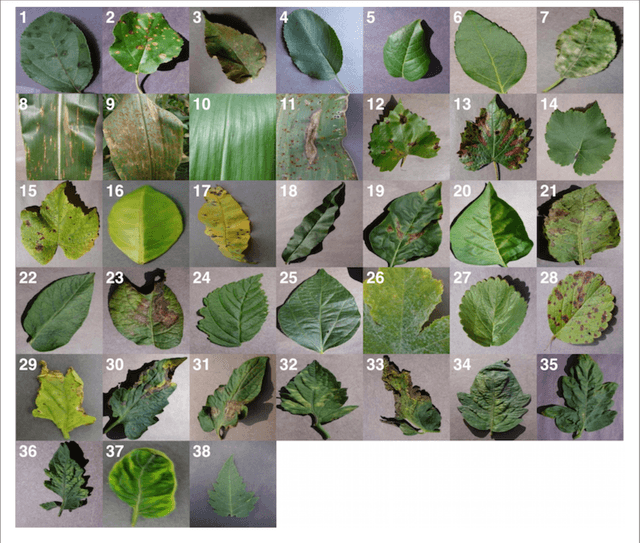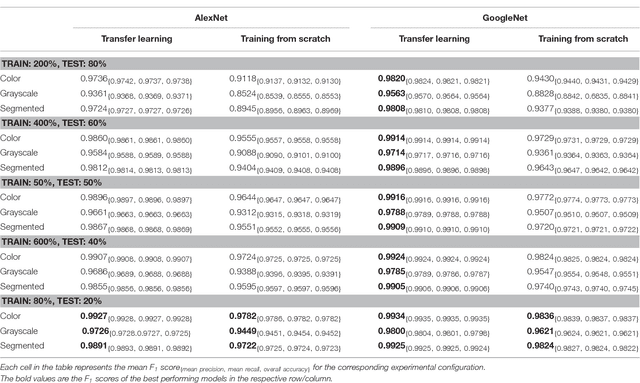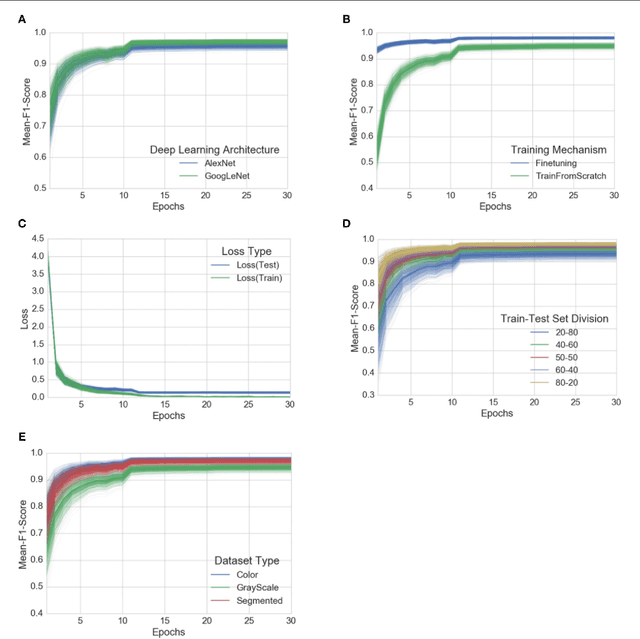Using Deep Learning for Image-Based Plant Disease Detection
Paper and Code
Apr 15, 2016



Crop diseases are a major threat to food security, but their rapid identification remains difficult in many parts of the world due to the lack of the necessary infrastructure. The combination of increasing global smartphone penetration and recent advances in computer vision made possible by deep learning has paved the way for smartphone-assisted disease diagnosis. Using a public dataset of 54,306 images of diseased and healthy plant leaves collected under controlled conditions, we train a deep convolutional neural network to identify 14 crop species and 26 diseases (or absence thereof). The trained model achieves an accuracy of 99.35% on a held-out test set, demonstrating the feasibility of this approach. When testing the model on a set of images collected from trusted online sources - i.e. taken under conditions different from the images used for training - the model still achieves an accuracy of 31.4%. While this accuracy is much higher than the one based on random selection (2.6%), a more diverse set of training data is needed to improve the general accuracy. Overall, the approach of training deep learning models on increasingly large and publicly available image datasets presents a clear path towards smartphone-assisted crop disease diagnosis on a massive global scale.
 Add to Chrome
Add to Chrome Add to Firefox
Add to Firefox Add to Edge
Add to Edge